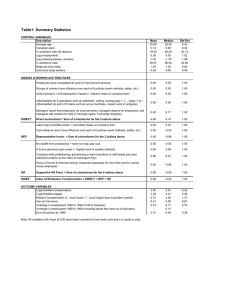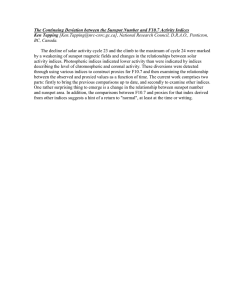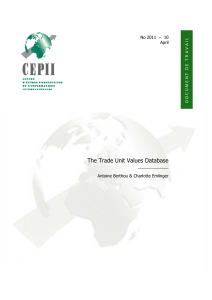Proceedings of 9th International Business and Social Science Research Conference
advertisement
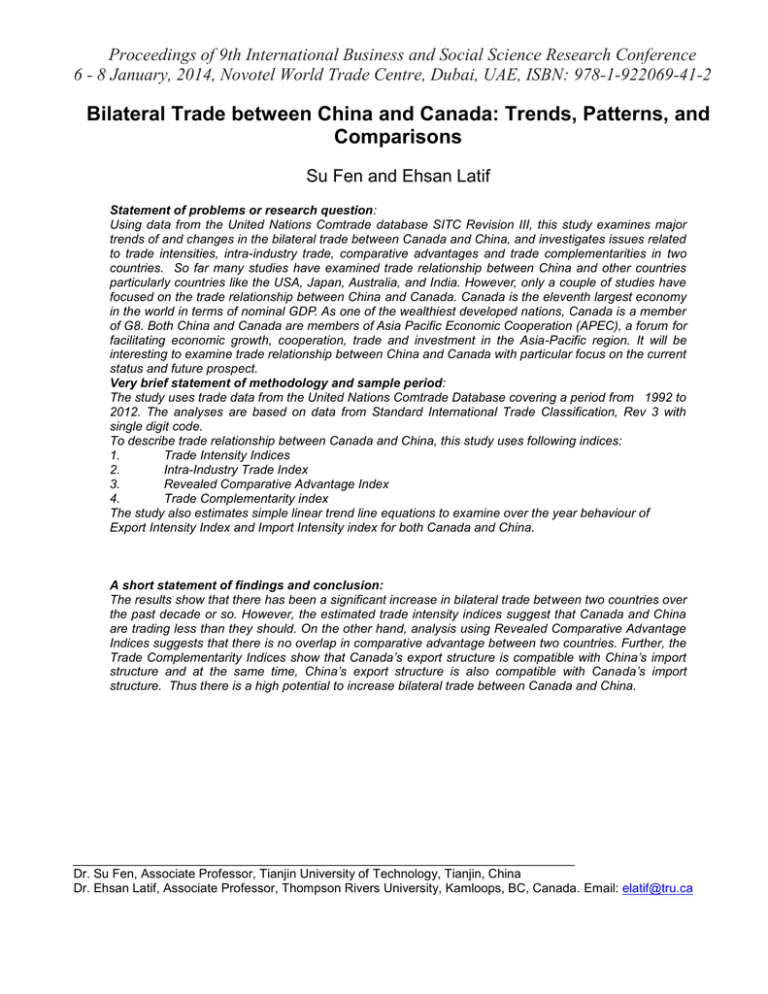
Proceedings of 9th International Business and Social Science Research Conference 6 - 8 January, 2014, Novotel World Trade Centre, Dubai, UAE, ISBN: 978-1-922069-41-2 Bilateral Trade between China and Canada: Trends, Patterns, and Comparisons Su Fen and Ehsan Latif Statement of problems or research question: Using data from the United Nations Comtrade database SITC Revision III, this study examines major trends of and changes in the bilateral trade between Canada and China, and investigates issues related to trade intensities, intra-industry trade, comparative advantages and trade complementarities in two countries. So far many studies have examined trade relationship between China and other countries particularly countries like the USA, Japan, Australia, and India. However, only a couple of studies have focused on the trade relationship between China and Canada. Canada is the eleventh largest economy in the world in terms of nominal GDP. As one of the wealthiest developed nations, Canada is a member of G8. Both China and Canada are members of Asia Pacific Economic Cooperation (APEC), a forum for facilitating economic growth, cooperation, trade and investment in the Asia-Pacific region. It will be interesting to examine trade relationship between China and Canada with particular focus on the current status and future prospect. Very brief statement of methodology and sample period: The study uses trade data from the United Nations Comtrade Database covering a period from 1992 to 2012. The analyses are based on data from Standard International Trade Classification, Rev 3 with single digit code. To describe trade relationship between Canada and China, this study uses following indices: 1. Trade Intensity Indices 2. Intra-Industry Trade Index 3. Revealed Comparative Advantage Index 4. Trade Complementarity index The study also estimates simple linear trend line equations to examine over the year behaviour of Export Intensity Index and Import Intensity index for both Canada and China. A short statement of findings and conclusion: The results show that there has been a significant increase in bilateral trade between two countries over the past decade or so. However, the estimated trade intensity indices suggest that Canada and China are trading less than they should. On the other hand, analysis using Revealed Comparative Advantage Indices suggests that there is no overlap in comparative advantage between two countries. Further, the Trade Complementarity Indices show that Canada’s export structure is compatible with China’s import structure and at the same time, China’s export structure is also compatible with Canada’s import structure. Thus there is a high potential to increase bilateral trade between Canada and China. ________________________________________________________________________ Dr. Su Fen, Associate Professor, Tianjin University of Technology, Tianjin, China Dr. Ehsan Latif, Associate Professor, Thompson Rivers University, Kamloops, BC, Canada. Email: elatif@tru.ca

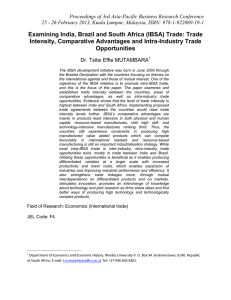

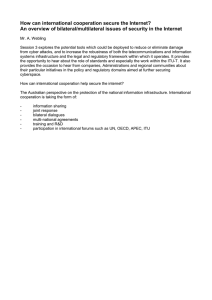
![[#EXASOL-1429] Possible error when inserting data into large tables](http://s3.studylib.net/store/data/005854961_1-9d34d5b0b79b862c601023238967ddff-300x300.png)
